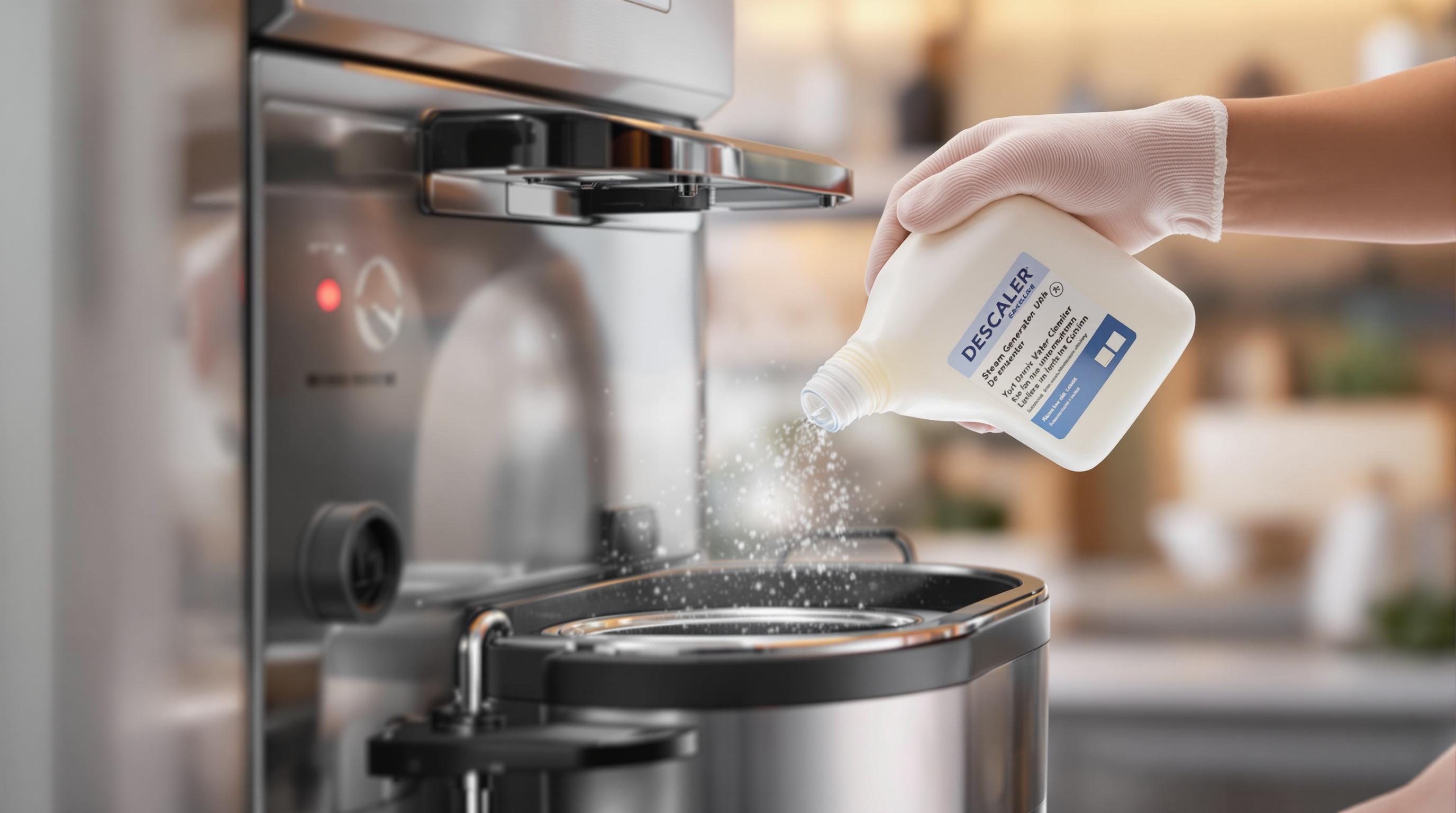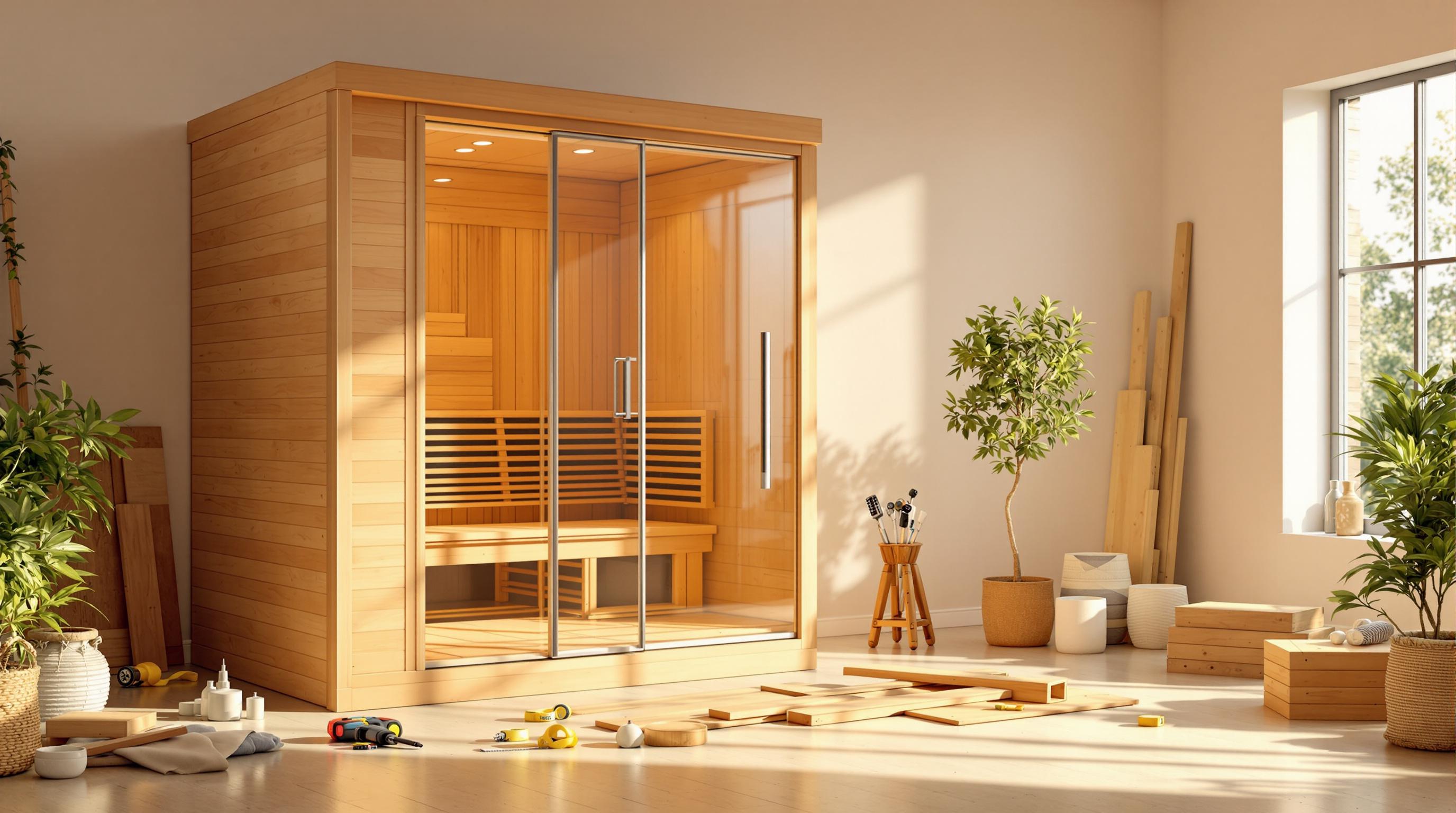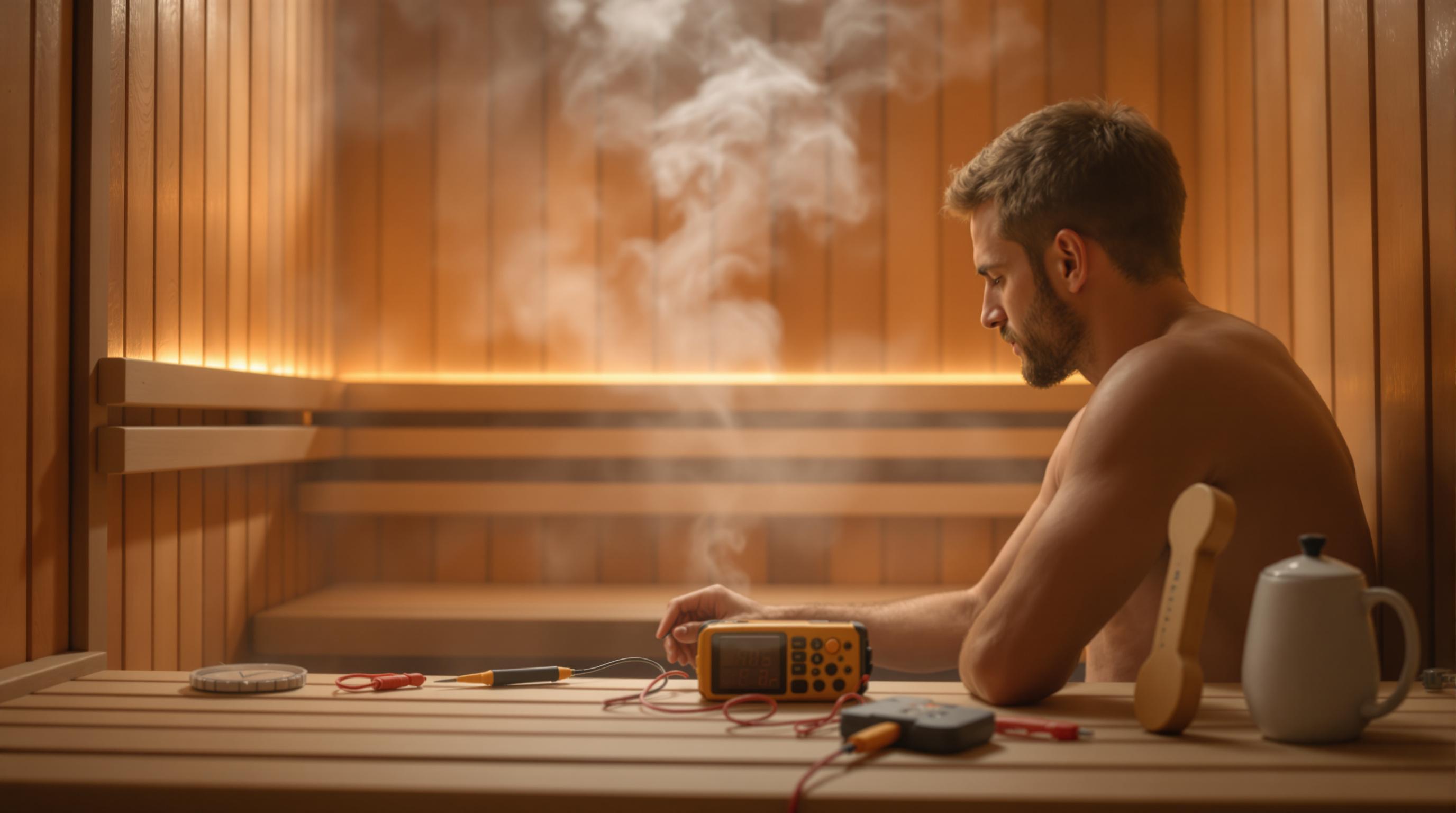Cedar and hemlock are popular wood choices for saunas, but they differ in moisture resistance, durability, and cost. Here's what you need to know:
- Cedar: Naturally resistant to moisture, decay, and insects due to its oils. It requires minimal maintenance, lasts over 30 years, and has a distinct earthy aroma. Ideal for outdoor or humid environments.
- Hemlock: More affordable but needs regular treatment to handle moisture. It’s dense, hypoallergenic, and works best in indoor saunas with controlled humidity. Maintenance is higher, with a shorter lifespan if untreated.
Quick Comparison
| Feature | Cedar | Hemlock |
|---|---|---|
| Moisture Resistance | Excellent (natural oils) | Needs treatment |
| Maintenance Needs | Minimal | Regular upkeep |
| Durability | Over 30 years | Shorter lifespan without care |
| Aroma | Strong, earthy scent | Neutral, subtle |
| Initial Cost | Higher upfront cost | Budget-friendly |
| Ideal Use | Outdoor or humid environments | Indoor, stable conditions |
Choose cedar for long-lasting durability and low maintenance in humid or outdoor settings. Opt for hemlock if you’re on a budget and building an indoor sauna with stable conditions.
Sauna Wood: Which Wood to Use in Your Sauna Project?
Moisture Resistance: Cedar Compared to Hemlock
Cedar and hemlock handle moisture differently, which directly impacts the durability and maintenance of saunas.
Cedar's Natural Oils and Water Protection
Cedar contains natural oils that act as a shield against water absorption. This makes it highly resistant to both moisture and decay, making it an excellent choice for saunas - especially outdoor ones or those in consistently humid conditions [1][3].
Hemlock's Density and Moisture Challenges
Hemlock is dense and stable but lacks cedar's natural resistance to moisture. Without treatment, it can absorb water, leading to potential mold and mildew issues in damp environments. However, treated hemlock can work well in indoor saunas with controlled humidity, offering a budget-friendly option without sacrificing functionality [1][3][4].
| Property | Cedar | Hemlock |
|---|---|---|
| Moisture Resistance | Natural oils provide strong protection | Needs regular treatment |
| Lifespan | Over 30 years with minimal care | Shorter lifespan without treatment |
| Mold Resistance | High due to natural compounds | Lower, requires protective coatings |
Choosing the right wood depends not just on moisture resistance but also on upkeep and overall durability [1][2].
Durability and Maintenance Needs
Cedar's Strength and Easy Care
Cedar stands out for its natural strength and ability to thrive in sauna settings. Its unique cellular structure and natural oils make it a reliable choice, lasting over 30 years with just basic upkeep. These oils help resist decay and insects, eliminating the need for chemical treatments [1][3].
Maintaining cedar is simple. A quick clean with mild soap and water is usually enough to keep it in good shape. This makes it especially practical for outdoor saunas or areas with high humidity [1][3].
Hemlock's Care Requirements
Hemlock, known for its sturdy structure thanks to its density, demands a bit more attention to maintain its durability [1][4]. Regular sealing, routine inspections, and addressing moisture issues quickly are key to keeping it in top condition [1][3].
In indoor spaces with controlled humidity, hemlock can last as long as cedar if properly cared for. However, its higher maintenance needs can add to both time and cost [1][3].
Durability and upkeep are just one piece of the puzzle - next, we’ll dive into how cedar and hemlock compare when it comes to sensory appeal.
Aesthetic and Sensory Comparison
Cedar's Aroma and Warm Appearance
Cedar stands out with its rich red and golden tones, creating a cozy and welcoming vibe. Its smooth surface, minimal knots, and low sap content add to its polished look [1]. The wood also emits an earthy scent that many find calming [1]. However, for individuals with respiratory sensitivities or allergies, the aroma might feel overpowering or irritating [1][3].
Hemlock's Neutral Aroma and Subtle Look
Hemlock offers a more understated charm, perfect for minimalist aesthetics. Its light color and subtle grain patterns give it a natural, grounded appearance [1]. One of hemlock's standout features is its hypoallergenic nature. With little to no scent, it’s an ideal option for those sensitive to strong aromas or prone to allergies [1][3]. This neutral quality allows users to focus on the sauna's heat and steam without any sensory distractions.
| Feature | Cedar | Hemlock |
|---|---|---|
| Color Tone | Rich red and golden hues | Light, natural tones |
| Aroma | Strong, earthy scent | Minimal to no scent |
| Grain Pattern | Smooth, minimal knots | Subtle, refined grain |
| Allergenic Properties | May affect sensitive individuals | Hypoallergenic |
The visual and sensory aspects of these woods also tie into their upkeep. Cedar's natural oils help maintain its look and aroma over time, while hemlock's lighter tones might need more frequent cleaning in humid conditions [1][3]. While sensory appeal is a major factor in sauna design, practical considerations like cost often shape the final choice.
sbb-itb-3953eb0
Cost and Value Analysis
Cedar's Higher Cost and Benefits
Cedar comes with a higher price tag, but for good reasons. Its natural durability, resistance to moisture, and pleasant aroma make it a standout choice for sauna enthusiasts [1][3]. These qualities make cedar especially appealing for outdoor or frequent sauna use, where durability and minimal maintenance are key.
The real value of cedar lies in its long-lasting nature, low upkeep needs, and sensory benefits. Its natural oils not only enhance its functionality but also create a relaxing atmosphere [5]. For those in humid climates or planning regular sauna sessions, cedar’s ability to resist moisture can offset its higher initial cost by minimizing future repairs or replacements [1][3].
While cedar offers premium qualities, it may not be the best fit for every budget. That’s where hemlock steps in as a practical alternative.
Hemlock's Lower Cost and Practicality
Hemlock is a cost-effective option that provides a good balance of quality and affordability [1][3]. When properly treated, it can handle moisture and wear, making it suitable for saunas in controlled environments [5].
Over time, however, hemlock’s maintenance needs can increase overall costs [3]. For indoor saunas where conditions are stable, hemlock can perform on par with cedar, making it a solid option for those looking to save on upfront expenses.
| Cost Factor | Cedar | Hemlock |
|---|---|---|
| Initial Investment | Higher upfront cost | More budget-friendly |
| Maintenance Needs | Minimal maintenance required | Regular treatments needed |
| Climate Suitability | Ideal for humid environments | Better for controlled settings |
| Long-term Value | Extended lifespan, natural protection | Good performance with proper care |
| Additional Benefits | Natural insect resistance, aromatic properties | Hypoallergenic, neutral scent |
For tailored advice on choosing the right wood for your sauna, check out resources like Find the Home Sauna of Your Dreams.
Choosing between cedar and hemlock often comes down to weighing cost against the features you value most - a topic we’ll delve into further in the next section.
Choosing the Right Wood for Your Sauna
Think About Your Climate and Sauna Usage
If your sauna is outdoors or in a humid area, cedar is a smart choice. It resists warping and decay, making it great for handling changing weather. On the other hand, for indoor saunas in stable conditions, hemlock can be a more affordable and dependable option. However, if you plan to use your sauna often, cedar’s durability might make it worth the investment [1][3].
Weigh Budget Against Features You Want
While hemlock is easier on your wallet upfront, it tends to come with higher maintenance costs. Cedar, although pricier at first, often ends up being more cost-effective due to its durability and lower repair needs [1][4]. If you're sensitive to strong scents or prefer a more neutral atmosphere, hemlock’s mild properties might be a better fit for you [1][3].
For personalized recommendations, check out Find the Home Sauna of Your Dreams.
Conclusion and Key Takeaways
Cedar vs. Hemlock: A Quick Comparison
Cedar and hemlock each bring their own strengths to the table. Cedar stands out for its natural oils that resist moisture, decay, and insects. Its rich tones and earthy aroma also add to the overall sauna experience. Hemlock, on the other hand, is a dense and stable option that's more affordable - making it a popular choice for indoor saunas in controlled environments. However, it requires more maintenance to stay in good condition [1][3].
| Feature | Cedar | Hemlock |
|---|---|---|
| Moisture Resistance | Naturally resistant | Requires added treatment |
| Maintenance Needs | Low | Higher |
| Durability | Over 30 years | Varies with upkeep |
| Aroma | Strong, earthy | Neutral |
| Initial Cost | Higher upfront cost | Budget-friendly |
| Ideal Use | Outdoor or humid areas | Indoor, stable environments |
After considering these factors, you can decide which wood aligns better with your sauna preferences and environment.
Find the Right Sauna for You
Find the Home Sauna of Your Dreams is a helpful resource to guide you in selecting the perfect sauna. Whether you're drawn to cedar's premium benefits or hemlock's cost-effective appeal, this platform offers insights to match your needs. Your final decision will depend on factors like climate, sauna placement, and how much upkeep you're willing to take on [1][3][4].
FAQs
Which is better, cedar or hemlock?
Both cedar and hemlock have their strengths, and the ideal choice depends on your sauna's specific needs [1][3]. Here's a quick breakdown to guide your decision:
Cedar features:
- Naturally resists moisture and decay
- Requires little upkeep
- Performs well in outdoor or humid environments
- Offers a rich, aromatic scent [1][3]
Hemlock features:
- More budget-friendly upfront
- Retains heat effectively
- Hypoallergenic, making it suitable for sensitive users
- Works best in controlled indoor settings [2][3]
When choosing, consider these factors:
- Location: Cedar is better for outdoor or humid areas, while hemlock fits indoor, climate-controlled spaces [3][4].
- Budget: Cedar costs more initially but needs less maintenance over time. Hemlock has a lower upfront cost but may require extra care [1][3].
- Frequency of Use: Cedar is more durable for frequent use in varied conditions. Hemlock is a practical choice for occasional use in stable environments [1][4].
Cedar's natural durability makes it a great choice for tougher conditions, while hemlock provides good value for indoor saunas. Base your decision on your environment, usage, and budget [1][3].


